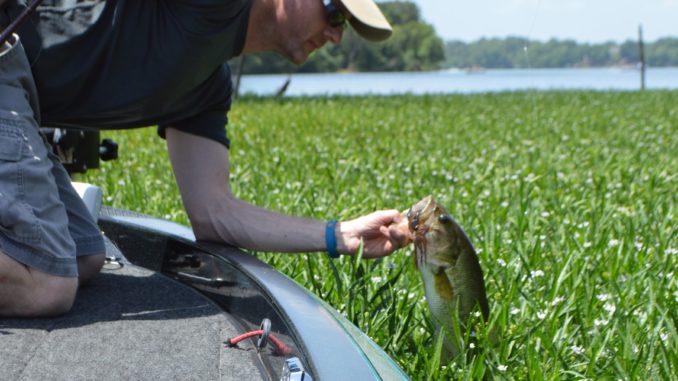
Biologists in both Carolinas know how much aquatic vegetation like water willow can mean to a bass fishery. Fishermen need to learn how to make it work for them.
Brett Collins lives in Ridgeway, S.C., a small town of about 300 just west of Lake Wateree where he’s fished since the 1960s. He’s watched the lake change through the years and said it has become a different fishery since the early 1990s, about the time the water willow arrived.
Collins owns and operates Carolina Anglers Team Trail, which organizes bass tournaments across the Carolinas. He said fishing has always been good at Wateree, but anglers these days are catching more and larger bass from the Catawba River impoundment. At his weigh-ins, a couple of 8-pounders usually show up, and competitors have even presented a few 9- and 10-pounders. That’s not counting what he calls “piles of 6-pounders.”
Collins has a theory about why fishing has improved. “I think it’s the grass,” he said. “They in that grass all year except the winter.”
Scott Lamprecht agrees with Collins. A fisheries biologist with the S.C. Department of Natural Resources, he said there’s no question water willow and other types of aquatic vegetation improve fisheries, especially where shoreline cover and sheltered coves are limited. How much they help is debated by biologists, but they don’t argue over their importance to fish such as bass and crappie. Mark Fowlkes, a fisheries biologist with the N.C. Wildlife Resources Commission, explained why.
“Aquatic plants provide a valuable refuge for juvenile sport fish,” he said. “They also are habitat and a food source for aquatic insects, which juvenile sport fish feed on. Depending on the vegetation and time of year, adult bass may hunt along the edge or in the vegetation or sit and ambush prey. Aquatic plants also serve as a food source for waterfowl and other aquatic wildlife, improve water clarity and quality, reduce rates of shoreline erosion and sediment re-suspension and help prevent the spread of nuisance exotic plants.”
Water willow is an emergent aquatic plant that resembles a corn stalk and has pink-and-white flowers.
“At one time,” Collins said of Lake Wateree’s grass, “it was just in patches no bigger than 10 yards down the bank,”
But it has spread over the past 10 years. It now grows in large beds from the shoreline to about 5 feet deep, he said, along the entire length of the lake. That’s not something that’s unique to Lake Wateree. Water willow has taken hold in all the Yadkin River reservoirs and Mountain Island Lake near Charlotte, and it’s spreading to other lakes in the Carolinas, some appearances the result of biologists’ plantings. Wherever it grows, it catches the attention of bass and anglers, especially during the summer.
Andrew Helms and Jake Whitaker never miss making a cast at water willow. Members of UNC Charlotte’s bass-fishing club, the Bass Rats, the pair won the B.A.S.S. College National Championship last year on Georgia’s Lake Chatuge and won the Bassmaster College Classic this past winter on South Carolina’s Lake Keowee.
Helms lives in Monroe, N.C., so he mostly fishes the water willow that grows in nearby Yadkin and Pee Deer River impoundments.
“Badin has it a whole lot, and Tillery does, too,” he said.
Whitaker lives in Fairview, an Asheville surburb, and whenever club tournaments take him to Mountain Island Lake or one of the Yadkin impoundments, he seeks out the emergent grass.
“It’s one of my favorite things to fish, because Norman and Wylie don’t have grass,” he said.
The best thing about water willow, at least for Helms and Whitaker, is the bass.
“You can very well catch a big one out of the grass,” Helms said, describing fish as above-average in size and more aggressive than other fish. “If they are there, they will eat. You don’t have to force it.”
Water willow attracts bass whenever and wherever you find it.
“I think it’s best when it first starts to sprout,” Helms said. That happens most years in early June, when lakes are usually higher, making more shallow cover such as water willow available to bass. But Helms doesn’t stop fishing it as the calendar flips through summer, he just seeks out deeper stretches. He wants the outside edge of the grass to be growing in at least 2 to 3 feet of water.
“If you have a channel swing bank, it sets up perfectly,” Whitaker said. “The more water in the grass, the better it will be” allowing bass to move into the grass to feed, then quickly retreat to deeper water for safety.
Collins finds the same to hold true on Lake Wateree. The better beds of water willow are from mid-lake to the lower end, where he concentrates the patches that grow along the main river, the ones that are usually close to deeper water.
From a distance, one stretch of water willow looks like the next. But like running your deep-diving crankbait across the sweet spot on submerged structure, you need to find the sweet spots in each grass bed. Whitaker scans them for foreign objects such as laydowns or docks. Even a lost cooler top or piece of dock float lodged in the grass, can attract a bass or two.
Points and pockets along the edges make perfect ambush spots, so he fires an extra cast or two at each. Those irregularities, he said, will always hold more bass than a straight edge. Collins has been known to make his own sweet spots.
When water willow grows tall on Lake Wateree, Collins fishes the edge, of course, but he doesn’t let thick stretches slow him down, either. He just picks up his secret weapon — a pair of hedge trimmers. He’ll lean over his boat’s gunwale and cut the water willow down to the surface. When he’s done, he has a hole about 3 feet in diameter where his frog can sit on the surface, and bass can smash it. He’ll cut a few holes in beds around the lake, so he has several to fish before the grass grows back.
What bass are eating in the water willow depends on the season. When it first starts growing, Whitaker said shad will spawn in it. So will bluegill, which bed around every full moon in summer. That’s when fishing a hollow-bodied frog in and around water willow can be outstanding, he said. For the most part, lure selection mirrors the baitfish found in it.
During summer, when water willow has reached its thickest and tallest, Helms starts on the outside edge, running a buzzbait or hopping a hollow-bodied frog. He also will slowly work a soft stickbait, such as a Senko, floating worm or soft-plastic jerkbait, along the edge. It’s important to key on the edge during low-light periods when bass feel most comfortable roaming and chasing bait. And don’t just limit your fishing to the outside edge. Bass will cruise the edge closest to shore, even in the shallowest of water. As long as there is heavy cover and low light, they will venture there to feed, even during the dog days of summer. Large holes in the middle of beds also offer multiple edges. Fish each thoroughly.
Once the sun is high in the sky, bass retreat into the grass, and Whitaker sends his lure right in behind them.
“When the sun gets up and it gets hot, pick up your favorite flipping bait, flip in there, and you’ll get bit,” said Whitaker, who will spool up with 17-pound fluorocarbon for its low stretch and abrasion resistance, which are well suited to extracting bass from the heavy cover.
Keeping his boat away from the edge, he’ll use underhand pitches to drop his lure inside the thickest stands of water willow, letting his lure bust its way through to the bottom. What may look impenetrable from the top is actually quite open for bass underneath. Think of it like a forest. You can look up and see a thick canopy of leaves, but you’re free to walk around the trunks.
Texas-rigged soft-plastic lures — creature baits, tubes and straight-tail worms — are best suited for pitching into water willow. Their sleek design and hidden hook allow them to slide through the top leaves and reach the bottom. You’ll need a stout 3/0 or 4/0 hook and a 3/8- or ½-ounce weight. You also will want a bobber stop or something else designed for pegging weights. Add it your line about 3/4-inch above the weight. That way, when you make a pitch, your weight and lure will sink together. If you don’t, your weight and lure have a better chance of snagging on two different plants, ruining your cast. The space is important because it allows your lure some room to wiggle. A weight pegged tight against the hook dampens that action.
Whitaker keeps his color selection simple when fishing water willow. He likes black or black/blue when the water is stained and natural hues such as green pumpkin or watermelon with red or purple flake when it’s clear.
DESTINATION INFORMATION
HOW TO GET THERE — You’ll find good fishing around beds of water willow at Mountain Island Lake or any Yadkin River lakes in North Carolina and Lake Wateree in South Carolina. Mountain Island is on the border between Mecklenburg and Gaston counties, with a public boat access area at the US 16 bridge across the lake. Lake Wateree is east of I-77 about 45 minutes south of Charlotte. Public ramps are numerous; pick one at www.duke-energy.com/pdfs/wateree.pdf.
WHEN TO GO — Water willow starts growing in early June and dies off in late fall. Bass will live in it anytime it’s growing. The beds are thickest from late June through early September.
BEST TECHNIQUES — Bass relate to water willow in two ways: hunting along the edges and hunkering down in the thickest stands. Fish hollow-bodied frogs and buzzbaits along the edges during low-light periods, focusing on any point, pocket or foreign object. When the sun is high, pitch a Texas-rigged soft-plastic lure into the densest stands of water willow. The best beds are often the ones close to deep water.
ACCOMMODATIONS — For lodging near Mountain Island Lake, visit www.charlottesgotalot.com; for Lake Wateree, visit www.kershawcountychamber.org; for Yadkin River lakes, visit www.stanlycvb.com and www.visitsalisburync.com.
MAPS — Fishing Hot Spot, 800-All-MAPS, www.fishinghotspots.com; Kingfisher Maps, 800-326-0257, www.kfmaps.com.

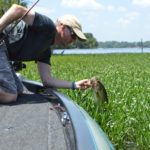
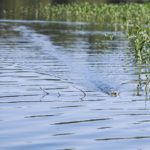
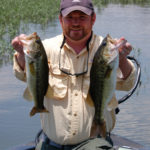
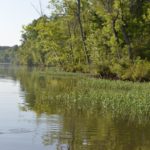


Be the first to comment